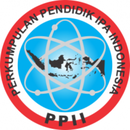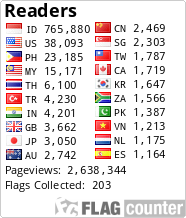ANALYSES OF JUNIOR HIGH SCHOOL SCIENCE COMPETENCIES IN KTSP AND INTEGRATED-REVISION OF 2013 CURRICULUM: REVIEWED FROM THE POTENTIAL OF DISASTER MITIGATION EDUCATION FOR THE SHAPING OF A DISASTER RESPONSE CHARACTER
DOI:
https://doi.org/10.21831/jser.v2i2.22479Keywords:
KTSP, revised of K-13, character, natural disaster mitigation, scienceAbstract
This study aims to analyze the science competencies in the JHS (Junior High Schools) which is integrated to disaster mitigation education (earthquake, tsunami, and volcano) in the School-Based Curriculum (KTSP) and the revised 2013 Curriculum in shaping a disaster response character. This study focuses on operational competencies that are potential to be integrated with disaster mitigation education, especially geological disasters. This was a library research analyzing any issues (problems) based on supporting literature reviewed. The data were collected through documentation, observation, and recorded findings that support to the research focus. As many as 40 science teachers and all documents of the implementation of the KTSP and revised-2013 Curriculum were involved in this study. Then the data were analyzed using a coding technique according to the components of the research focus and described qualitatively. The results of the study show that the number of science-competencies which have the potential to be integrated with disaster mitigation education is considered low compared to the whole of Science competencies that students must achieve. 0.48 % of science-competencies in JHS are potential to be integrated with disaster mitigation education. These competencies are 0.72 % in grade VII, 0.25% in grade VIII, and 0.5% in grade IX. These findings indicate that the contents of the curriculum have not been considered as a means of instilling the natural disaster response characterDownloads
References
Takahashi, K., Inomo H., Shiraki, W., Isouchi, C., Takahashi, M. (2017). Experience-Based Training in Earthquake Evacuation for School Teachers. IECMS Japan, 12, 782-790
Hiwasaki, L., Luna, E., Syamsidik, Shaw, R. (2014). Process for integrating local and indigenous knowledge with science for hydro-meteorological disaster risk reduction and climate change adaptation in coastal and small island communities. ELSEVIER, 10, 15-26
Richard Eiser, J., Bostrom, A., Burton, I., M. Johnston, D., McClure, J. (2012). Risk interpretation and action: A conceptual framework for responses to natural hazards. ELSEVIER, 1, 5-14
Spiekermann, R., Kienberger, S., Norton, J., Briones, F., Weichselgartner, J. (2015). The Disaster-Knowledge Matrix – Reframing and evaluating the knowledge challenges in disaster risk reduction. ELSEVIER, 13, 96-107
M. Shreve, C., Kelman, I. (2014). Does mitigation save? Reviewing cost-benefit analyses of disaster risk reduction. ELSEVIER, 10, 213-233
Gall, M., Hoan Nguyen, K., L. Cutter, S. (2015). Integrated research on disaster risk: Is it really integrated? ELSEVIER, 12, 255-264
Manandhar, S., Pratoomchai, W., Ono, K., Kazama, S., Komori, D. (2014). Local people's perceptions of climate change and related hazards in mountainous areas of northern Thailand. ELSEVIER, 11, 47-58
Contreras, D., Blaschke, T., Kienberger, S., Zeil, P. (2014). Myths and realities about the recovery of L'Aquila after the earthquake. ELSEVIER, 8, 125-142
Prajana Marwan Sejati. 2015. Ilmu Pengetahuan Alam Mitigasi Bencana Gunung Api kelas 4. Yogyakarta: Percetakan Amd
Pujianto. 2011. Analisis Proporsi Materi IPBA dalam Kurikulum Tingkat Satuan Pendidikan (KTSP) sebagai Dasar Pengembangan dan Pemahaman Materi Siaga Bencana di Sekolah. Yogyakarta: UNY
Ridwan Lasabuda. 2013. Pembangunan Wilayah Pesisir dan Lautan dalam Perspektif Negara Kepulauan Republik Indonesia. Jurnal Ilmiah Platax, I-2 (ISBN: 2302-3589), 92-101
Yakub Malik. Penentuan Tipologi Kawasan Rawan Gempabumi untuk Mitigasi Bencana di Kecamatan Pangalengan Kabupaten Bandung. Bandung: Jurusan Pendidikan Geografi FPIPS-UPI
Indyo Pratomo. 2006. Klasifikasi gunung api aktif Indonesia, studi kasus dari beberapa letusan gunung api dalam sejarah. Jurnal Geologi Indonesia, 1, 209-227
Raden Cecep Eka Permana, Isman Pratama Nasution, Jajang Gunawijaya. 2011. Kearifan Lokal Tentang Mitigasi Bencana pada Masyarakat Baduy. Makara Sosial Humaniora, 15, 67-76
A. Soehaimi. 2008. Seismotektonik dan Potensi Kegempaan Wilayah Jawa. Jurnal Geologi Indonesia, 3, 227-240
Danny Hilman Natawidjaja. 2007. Gempabumi dan Tsunami di Sumatra dan Upaya untuk Mengembangkan Lingkungan Hidup yang Aman dari Bencana Alam
Peraturan Menteri Pendidikan dan Kebudayaan (Permendikbud) nomor 61 tahun 2014 tentang KTSP
Peraturan Menteri Pendidikan dan Kebudayaan (Permendikbud) no 24 tahun 2016 tentang K-13
Sunyono. 2011. Mengkaji Model Pembelajaran Terpadu dalam Bingkai Kurikulum Terintegrasi. Fakultas Pascasarjana: UNNESA
Wahyudi Citrosiswoyo. 2005. Disaster Awareness in Primary Schools (DAPS) Tektonik Lempeng dan Gempabumi. Jakarta: Departemen Pendidikan Nasional Direktorat Pendidikan TK dan SD
Hery Harjono, dkk. 2007. Kesiapsiagaan Masyarakat: Kajian dan Pembelajaran untuk Mengantisipasi Gempabumi dan Tsunami. Jakarta: LIPI Pusat Penelitian Oseanografi
Goepfert, Dieter. 2006. Disaster Awareness in Primary Schools (DAPS) Gempabumi. Jakarta: Departemen Pendidikan Nasional Direktorat Pembinaan TK dan SD
J. Prager, Ellen, et al (diterjemahkan oleh Theodorus Dharma Wibisono, dkk). 2010. Bumi Murka: Sains dan Sifat Gempa Bumi, Gunung Berapi dan Tsunami. Bandung: Pakar Raya
Paulus Nugrahajati. 2012. Bencana Alam: Pencegahan dan Penanggulangannya. Jakarta: Wahyu Agria
Published
How to Cite
Issue
Section
License
Journal of Science Education Research allows readers to read, download, copy, distribute, print, search, or link to its articles' full texts and allows readers to use them for any other lawful purpose. The journal allows the author(s) to hold the copyright without restrictions. Finally, the journal allows the author(s) to retain publishing rights without restrictions
- Authors are allowed to archive their submitted article in an open access repository
- Authors are allowed to archive the final published article in an open access repository with an acknowledgment of its initial publication in this journal










